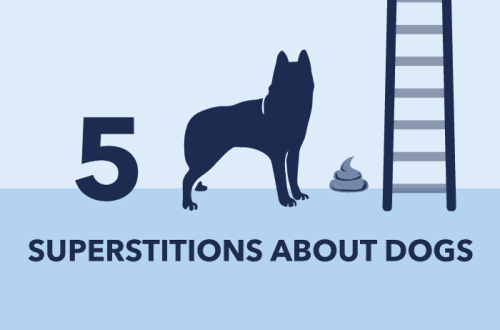
Myths and facts about dominance
Despite the fact that competent experts have long ceased to consider dogs as contenders for the role of enslavers of humanity, the theory of dog dominance over the Homo sapiens species is still being dragged along by an army of fans.


Debra Horwitz, DVM, DACVB and Gary Landsberg, DVM, DACVB, DECAWBM believe that people who want to build a healthy relationship with dogs need to know more about them than outdated strategies focused on “conquering” the position of “alpha individual”. Research has proven time and time again that dogs understand us much better than we understand them.
What myths about the “dominance” of dogs are still tenacious and spoil the lives of both people and pets?
Contents
- Myth 1: Don’t let your dog walk ahead of you.
- Myth 2: A tired dog is a good dog.
- Myth 3: You should walk through the door before your dog.
- Myth 4: You should eat before the dog – this shows that you are the “leader of the pack”
- Myth 5: Don’t let your dog climb on your bed or other furniture.
- Myth 6: If you make eye contact with your dog, he should look away first.
- Aren’t behavior problems and disobedience related to the dog’s attempts to dominate?
Myth 1: Don’t let your dog walk ahead of you.
Proponents of the theory of dominance are convinced that if the dog walks ahead (and even more so if he pulls on the leash), it means that he has subdued you!
Fact: Dogs can pull on the leash for a variety of reasons. This may be a desire to play, explore the world or communicate with relatives. It may be a learned behavior that has been reinforced. Or the dog may be trying to avoid the frightening situation.
The way a dog walks on a leash does not in any way characterize your status. It only says that you have not taught the dog to walk on a leash. It’s a matter of learning, not hierarchy.
Myth 2: A tired dog is a good dog.
Fact: It is definitely necessary to give your dog enough exercise to meet his natural needs and provide an enriched environment. However, excessive exercise can be harmful and lead to the development of cardiovascular, respiratory or joint diseases. The load should be selected individually, depending on the breed, age, health status and preferences of the dog. In addition, physical activity should not be limited. Physical activity will not relieve a dog of boredom, nor will it “cure” aggression, separation anxiety, or phobias. There are a huge number of physically developed dogs in the world that show aggression! It is your responsibility to provide the dog with an opportunity to explore the world and give the pet an intellectual challenge.
Myth 3: You should walk through the door before your dog.
Fact: A dog needs to be taught good manners: to come out when asked and not to kick people out of a doorway. But the doorway is a human invention, which by default is not very clear to dogs. This is a matter of upbringing and security, not hierarchy. And says nothing about respect.
Myth 4: You should eat before the dog – this shows that you are the “leader of the pack”
Fact: Dogs usually associate getting a tasty bite from you with the fact that the behavior they just displayed is desirable and acceptable.
A dog may want a piece that you put in its mouth, but this does not characterize its status in the family. In any case, the food is given to the dog by a person, and the dog simply cannot eat until this happens. It doesn’t matter if we eat before or after the dog.
Myth 5: Don’t let your dog climb on your bed or other furniture.
Like, if you allow a dog to climb a dais, you acknowledge that he has the same status, and lower yours in her eyes.
Fact: Neither dogs nor wolves use eminence to indicate social status. Highlands are never associated with wolf competition. Dogs or wolves can choose the most comfortable places to rest. And if it is necessary to track down a victim or an enemy, they rise to the dais.
The question is, do you want your dog to sleep on a bed, sofa, or chair? Is it safe? Do you enjoy or don’t want to find dog hair on your pillowcase? This is a personal decision for everyone, and it depends on your preferences. But it has nothing to do with hierarchy.
Myth 6: If you make eye contact with your dog, he should look away first.
Fact: Dogs show submission or fear by looking away. Domestic dogs have learned to look into the eyes of a person, and this is not associated with aggressive intentions or dominance. If the gaze is soft, at such moments both the person and the dog produce the hormone of affection – oxytocin.
Dogs can also learn to face a person on command. Teach your dog to make eye contact on command, and you can get his attention in difficult situations.
No.
Dogs don’t try to be the leader for humans. They just learn to interact with us, figuring out what works and what doesn’t work. They are constantly learning and drawing conclusions based on your actions. Violent methods do not make a dog reliable and self-confident.
If a person pays attention to the socialization of a pet, uses positive reinforcement, avoids punishment, sets clear rules, is clear and consistent, the dog will become an excellent companion and family member.







